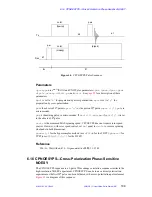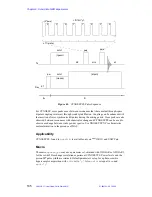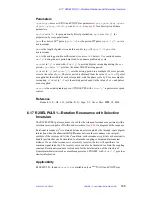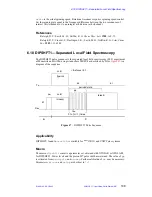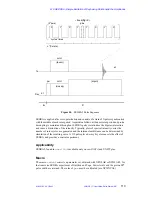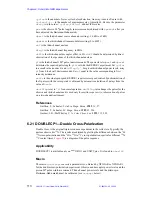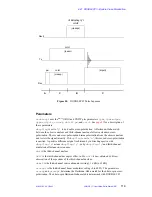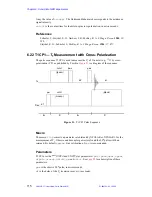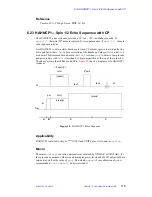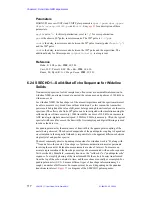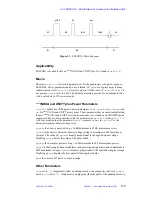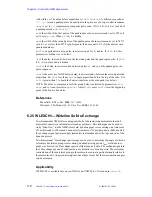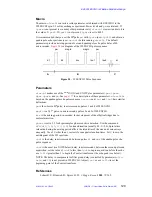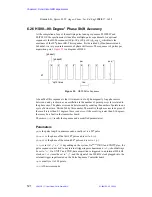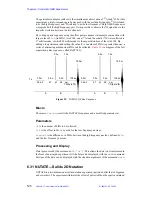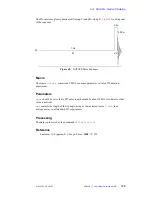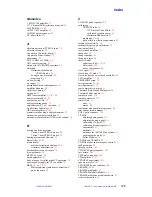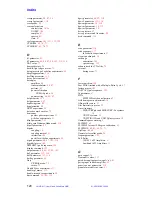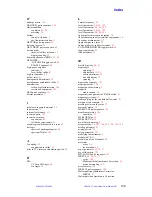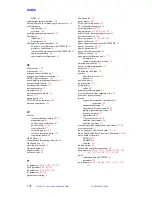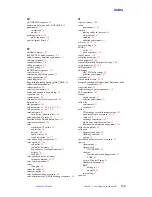
Chapter 6. Solid-State NMR Experiments
117
VNMR 6.1C User Guide: Solid-State NMR
01-999162-00 C0402
Parameters
HAHNCP1 uses
UNITY
INOVA and UNITYplus parameters
tpwr
,
tpwrm
,
dpwr
,
cppwr
,
dipolr
,
crossp
,
dblvl2
,
pw
, and
cntct
. See
for a description of these
parameters.
xpol
is set to
'n'
for direct polarization, or set to
'y'
for cross polarization.
pwx
is the observe 90
°
pulse, in microseconds. The 180
°
pulse is
2.0*pwx
.
tau1
is the delay, in microseconds, between the 90
°
pulse (contact pulse if
xpol='y'
)
and the 180
°
pulse.
tau2
is the delay, in microseconds, between the 180
°
pulse and the acquisition. The
additional delay for filter response
(alpha+fn/beta)
is also present.
Reference
Hahn, E. L Phys. Rev. 1950, 80, 580.
Carr, H. Y.; Purcell, E. M. Phys. Rev. 1954, 94, 630.
Rance, M.; Byrd, R. A. J. Magn. Reson. 1983, 52, 221.
6.24 SSECHO1—Solid-State Echo Sequence for Wideline
Solids
Non-narrowed spectra of solids samples can often reveal a considerable information. In
wideline NMR, no attempt is made to narrow the resonances, and patterns of 100 kHz or
wider can occur.
For wideline NMR, the line shape is of the utmost importance and the spectrometer must
be able to measure very broad lines without distortion. For this reason, the transmitter
power must be high and the value of
γ
B
1
must be large enough to uniformly excite the entire
spectrum. (The effects of a finite 90
°
pulse can be investigated with simulations using the
solids analysis software accessory.) With linewidths in excess of 100 kHz, an increase in
ADC (analog-to-digital converter) speed, 2 MHz or 5 MHz, is necessary. Often, the typical
spectral widths used far exceed the linewidths. Oversampling and digital filtering are used
to reduce the data size.
For quadrupolar nuclei, the main cause of linewidth is the quadrupolar coupling of the
nuclei being observed. The observed magnitude of the quadrupolar coupling is dependent
on orientation in the magnetic field and is responsible for the apparent difference between
single crystal and powder spectra.
The most commonly observed quadrupolar nucleus for wideline work is
2
H, along with
23
Na and a few other nuclei. Line shape is of prime consideration in most experiments
involving these nuclei. Relaxation measurements are also of interest. To measure an
accurate representation of the line shape, most spectra are measured with an echo sequence,
first described by Mansfield, commonly known as the “solid echo” or “quadrupolar echo”
sequence. To simplify phasing of the transformed FID, the echo is Fourier transformed
from the top of the echo onwards in time, and these echoes are usually oversampled. For
quadrupolar nuclei (I>3/2), because different types of line shape information may be
sought, a number of different echo sequences may be used, depending on the quantum
transitions in interest.
is a diagram of the SSECHO1 pulse sequence.


